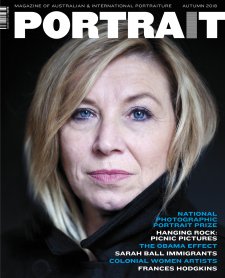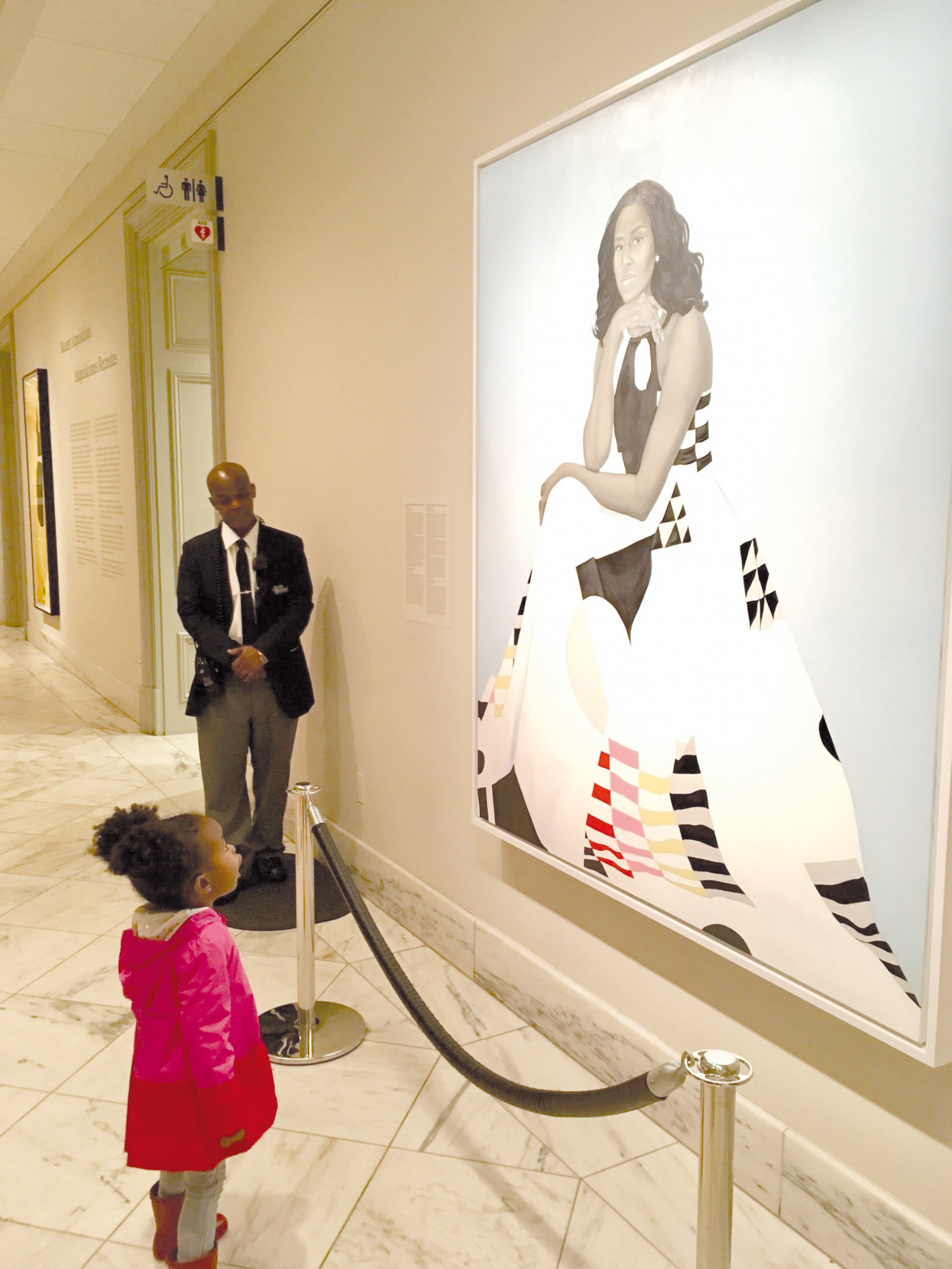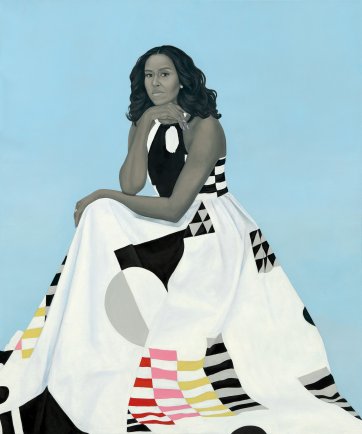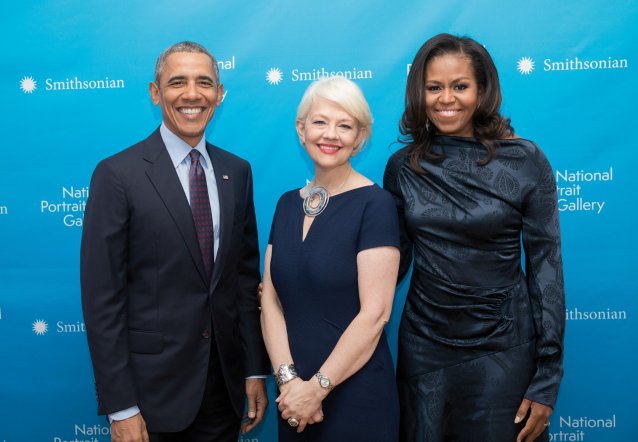On Thursday, March 1, a little girl called Parker Curry came to the National Portrait Gallery with her mum. As the two year-old gazed with open-mouthed wonder at the portrait of former First Lady Michelle Obama installed at our main entrance, Ben Hines –a visitor from North Carolina – took her picture and posted it on Facebook. Normally Ben has a small group of followers, and a popular post gets around 80 ‘likes’, but within 24 hours his photo had gone viral, reaching over 15,000 viewers, and an online news outlet reached out to learn more. ‘It was so touching and uplifting for me to see this beautiful child looking at a beautiful portrait of a powerful woman’, Ben recounted. ‘I was so delighted to have been in the right place at the right time.’
The Obama effect
by Kim Sajet, 3 May 2018
While Ben was being followed by the whole world and participating in an interview with CNN, the painter of Michelle Obama’s portrait, Amy Sherald, came across a similar picture of Parker. Sherald posted the photo on Instagram with the statement, ‘Feeling all the feels’, with a crying-face emoji. Recounting her first visit to a museum when she first saw a strong and positive depiction of a man who could have been her father, Amy identified closely with the toddler; ‘I knew I wanted to be an artist already,’ she recalled, ‘but seeing that painting made me realise that I could. What dreams may come?’ Within two days, Amy’s post received over 31,000 likes, including one from Michelle Obama herself, who later met with Parker at her office. Footage of the two of them having a dance party also went viral.
Such has been the ‘Obama Effect’ since the portraits were unveiled on 12 February 2018, at the National Portrait Gallery, Smithsonian Institution. At present (March 2018), an estimated 4,000 articles have been written about the portraits; 1.25 billion people have reached out via social media; and in the first month since the unveiling, the museum has more than doubled its normal attendance. While it is nice to think – as Ellie, our social media maven suggests – that for a short moment the National Portrait Gallery in Washington ‘broke the internet’, the more satisfying aftermath has been the dawning realisation to many outside the art world that portraits have power, and the stories we tell in our galleries can indeed change the world.
To some extent, the Obama Effect has brought the Smithsonian’s National Portrait Gallery full circle since its opening in 1968, 50 years ago. In that year of tumult, Americans were grappling with issues of identity. The Reverend Martin Luther King Jr. and Senator Robert Kennedy were killed; the country was at war in Vietnam; and disaffected citizens were marching in the streets to the rally cry of ‘Power to the People’. Today, America is once again seeing the rising of grassroots activism. Black Lives Matter, sanctuary cities, the Women’s March, the #metoo movement, protests against gun violence led by high school students, and Stand up for Scientists are all contributing to a moment of internal conversation.
Many people have asked me why there has been such an amazing reaction to the two Obama portraits. After all, art isn’t often the harbinger of such fierce national conversation. The answer, I believe, is not just the formal recognition of the nation’s first African American president and first lady, and the two remarkable artists, Kehinde Wiley and Amy Sherald, who captured their likenesses. It is also a reminder of what has been accomplished by Americans in the last half-century. Representing such values of inclusion, respect, and shared experience through art, the future, as seen through the eyes of a little girl staring at a strong black woman, seems a true representation of the motto on the Great Seal of the United States: E Pluribus Unum – Out of Many, One.
Related information



Portrait 59, Autumn 2018
Magazine
NPG Washington director Kim Sajet on the Obama portraits, Sarah Ball’s Immigrants, judging the NPPP, Frances Hodgkins, and Picnic at Hanging Rock.



Hope for kindness
Magazine article by Dr Sarah Engledow
Sarah Engledow arrives at the junction of fate and hope in Sarah Ball’s poignant Immigrants series.



Selfhood transcended
Magazine article by Dr Anne Sanders and Dr Christopher Chapman
Anne Sanders and Christopher Chapman bring passionate characterisation to Express Yourself, the Portrait Gallery collection exhibition celebrating iconoclastic Australians.











